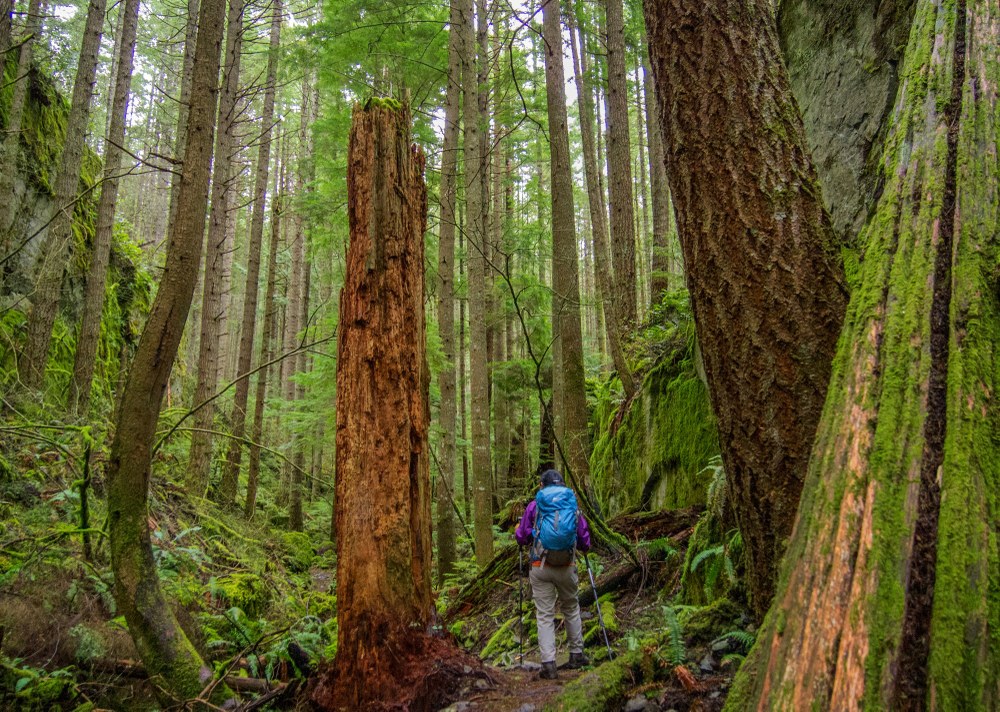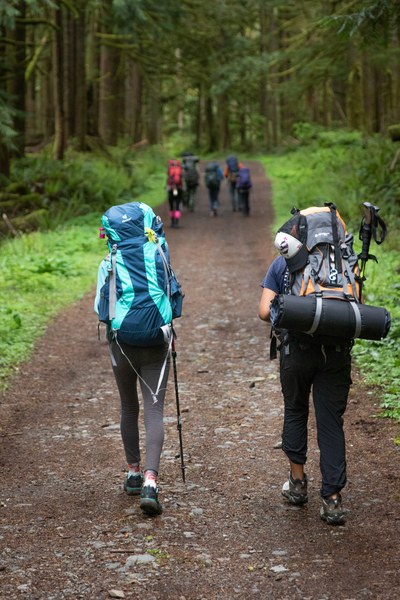
You’ve been day hiking and are ready to have your first overnight in the wilderness, but you’re not sure where to start. Below are a few steps to take before you go to maximize your chances of having a fun, successful trip:
Step 1: Gather Resources
Many sources of information exist to help with planning. Spend time researching where you want to go, when, and what to expect when you get there. Start with these essential resources:
Guidebooks: Mountaineers Books publishes many guidebooks, and you can never own too many - my shelves include more than 90, starting with my AMC White Mountain Guide purchased in 1966. Plus, Mountaineers members save 20%.
Maps: Both paper maps and mapping apps like Gaia and Caltopo can are useful sources of information, and are important resources to bring with you to ensure you don’t get lost.
Public agency websites: Sites like the National Park Service website for Mount Rainier National Park include useful trail and road condition reports.
Crowd sourcing: Websites like WTA.org, Mountaineers Trip Reports, and NWHikers.net include information and recent updates from individuals who have backpacked the trail themselves. These days you can also find great information on social media. Facebook has a lot of great groups that share recent conditions and trip ideas.
Step 2: Where to go
Deciding where to go is key to successful trip planning. Many destinations will give you a memorable trip; your goal is to find one of them. You can consider many things in making this decision.
Trail: What are the trail conditions like? Is it rocky, steep, brushy, or exposed? Are there any unabridged stream crossings? Do you have distance options based on possible campsites? How many feet of climbing and descending are required? Remember, hiking with a full backpack is more difficult than hiking with a daypack.
Road: How far a trailhead is from where you are and the road conditions getting there are important to keep in mind. Do you need a high-clearance or 4WD vehicle? Is the 5 miles of access road rough washboard, taking you 45 minutes to drive rather than the hoped-for 15? Are there washouts or blow downs?
Campsite Location: When planning campsite locations, guidebooks are a good resource, and maps provide information on possible off-trail campsites. When figuring out where to camp, your proximity to water is important - each gallon you have to bring is an additional 8 pounds to carry in your backpack. Also consider the views from the trail and at the campsites. Since I enjoy star viewing, I look for a campsite with a clear unobstructed view of the sky. I love to swim in alpine lakes, so swimmable lakes is another factor for me in route and campsite selection. What features do you value in a campsite?
Wildlife and bugs: The presence of wildlife and bugs at your campsite can be a positive or negative experience. One of my most memorable trips was a fall trip in Olympic National Park where a nearby herd of bugling Roosevelt Elk serenaded us at night. Concerns like human-accustomed black bears or bugs are less desirable. Some areas are buggier than others, such as those campsites close to stagnant ponds. Wind may help disperse bugs, but to a large degree, you can avoid bugs by visiting at a different time of year.
Permits and quotas: Another important factor that might determine where you backpack is permits and quotas. Generally, campsite quotas are an issue in Washington only for the National Parks. Each of the three National Parks in Washington have their own, constantly-changing rules for obtaining a permit. Check their websites for the latest information, and just know that long-advance planning, applications, and luck may be required.
Step 3: Decide when to go
When you go backpacking relates to where you are going. This involves both short-term and long-term planning. An example of short-term planning is checking the weather forecast for the next weekend to see whether it will rain, snow, or be sunny. If your goal is wildflower viewing, longer term planning might include what time of year wildflowers are most spectacular. Below are a few factors that change depending on the season:
Wildlife and bugs: Mosquitos may be worse in spring and early summer where the snow has just melted, and when temperatures exceed about 50 degrees. In alpine areas, July can be one of the worst times for mosquitoes. Hornets and yellow jackets seem to be worse later. Some animals, like elk, might be most active during their fall mating season.
Flowers, trees, and berries: Depending on location, flowers may be best in June and July. Fall colors, such as larch trees, may be best in late September or early October. Some destinations have prolific blueberries and other edible berries. The peak time varies by location, but late August and September are often a good bet.
Snow: Planning your trip around the snow level can help you avoid route-finding difficulties. In early and late season, the trails may be covered by snow, which makes navigation much more difficult.
Tides: If you’re on the coast, planning around the tides is essential. Trips along the Olympic Coast may involve sections only safely travelled at low tide. For these trips, it is important to time your trip based on low tides. The Olympic National Park website has this information, be sure to check it.
Moon phase: If you’re like me, you enjoy viewing stars and planets in the night sky. For optimal viewing, you’ll want to pay attention to the moon phase. I select a moonless night by checking the moon phase online. If I want to snowshoe under a moonlit sky on a long winter night, I wait for a full moon.
Other Factors
Company: While beyond the scope of this article, there are other factors to consider in planning a trip. One of those is who to go with. I’ve learned a lot from backpacking with others over the years, but I’ve also learned a lot from going solo. Consider what you want out of the trip as you decide group size and companions.
Gear: Another thing to consider is what gear and clothes to take. You can find suggested packing lists online – take a look at a few and decide what your priorities are, and how much weight you can comfortably and safely carry.
Safety: It’s also important to think about what to do if things go wrong. This includes first aid training, emergency notification options (such as a satellite messenger), and bail-out routes. Also equally as important are food planning, and figuring out how you’re going to treat your drinking water on-trail.
 Explorers hiking down Carbon River Road. Photo by Kevin Ouyoumjian.
Explorers hiking down Carbon River Road. Photo by Kevin Ouyoumjian.
Take a Backpacking Course With Us
Want to learn the finer details of everything from camp cooking to staying warm at night? Join us for one of our Intro to Backpacking courses! Offered at multiple branches, this is a great way to kick start your summer adventures. Find courses at www.mountaineers.org/find-courses
This article originally appeared in our Summer 2021 issue of Mountaineer Magazine. To view the original article in magazine form and read more stories from our publication, visit our magazine archive.
 Richard Lambe
Richard Lambe